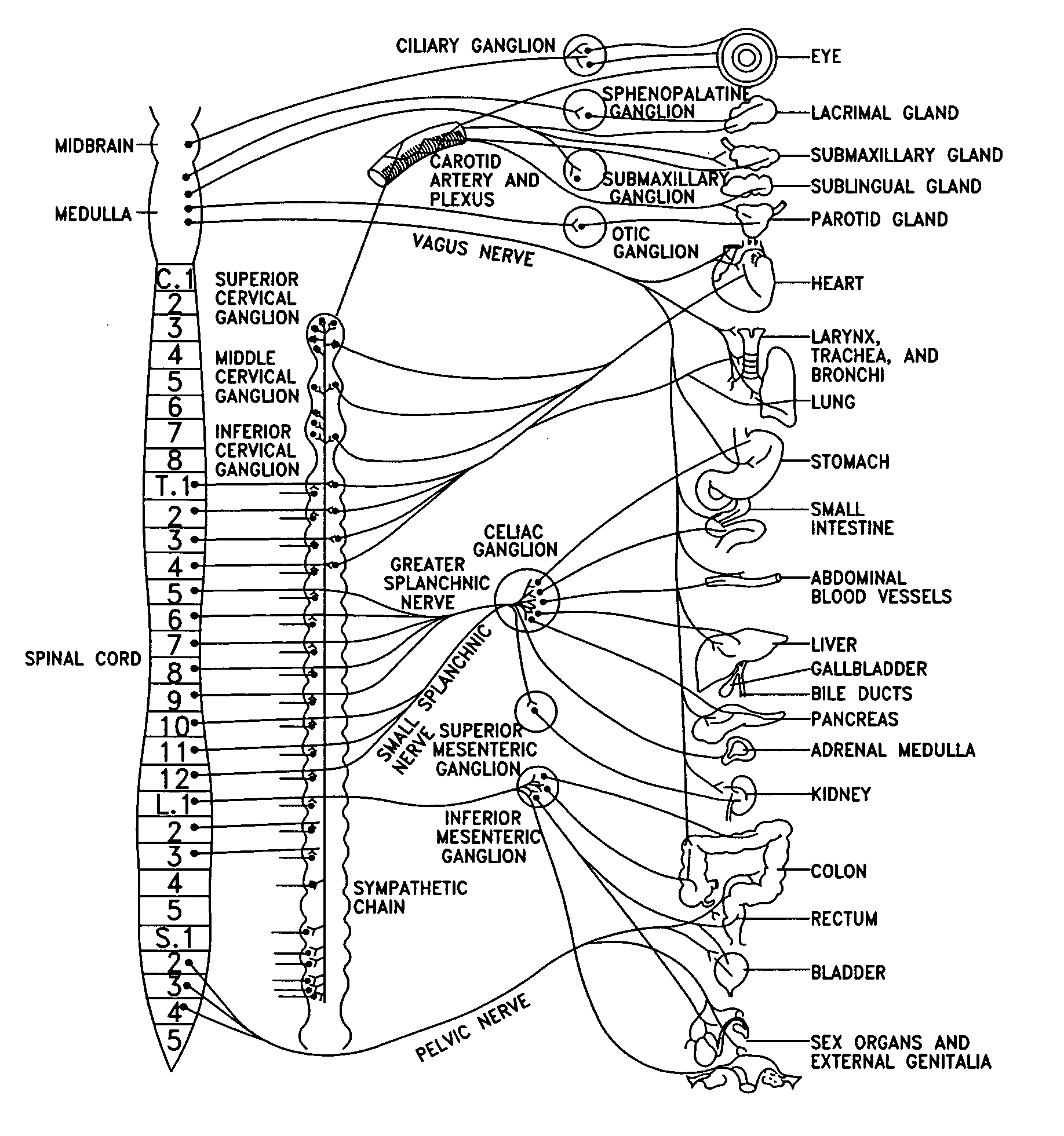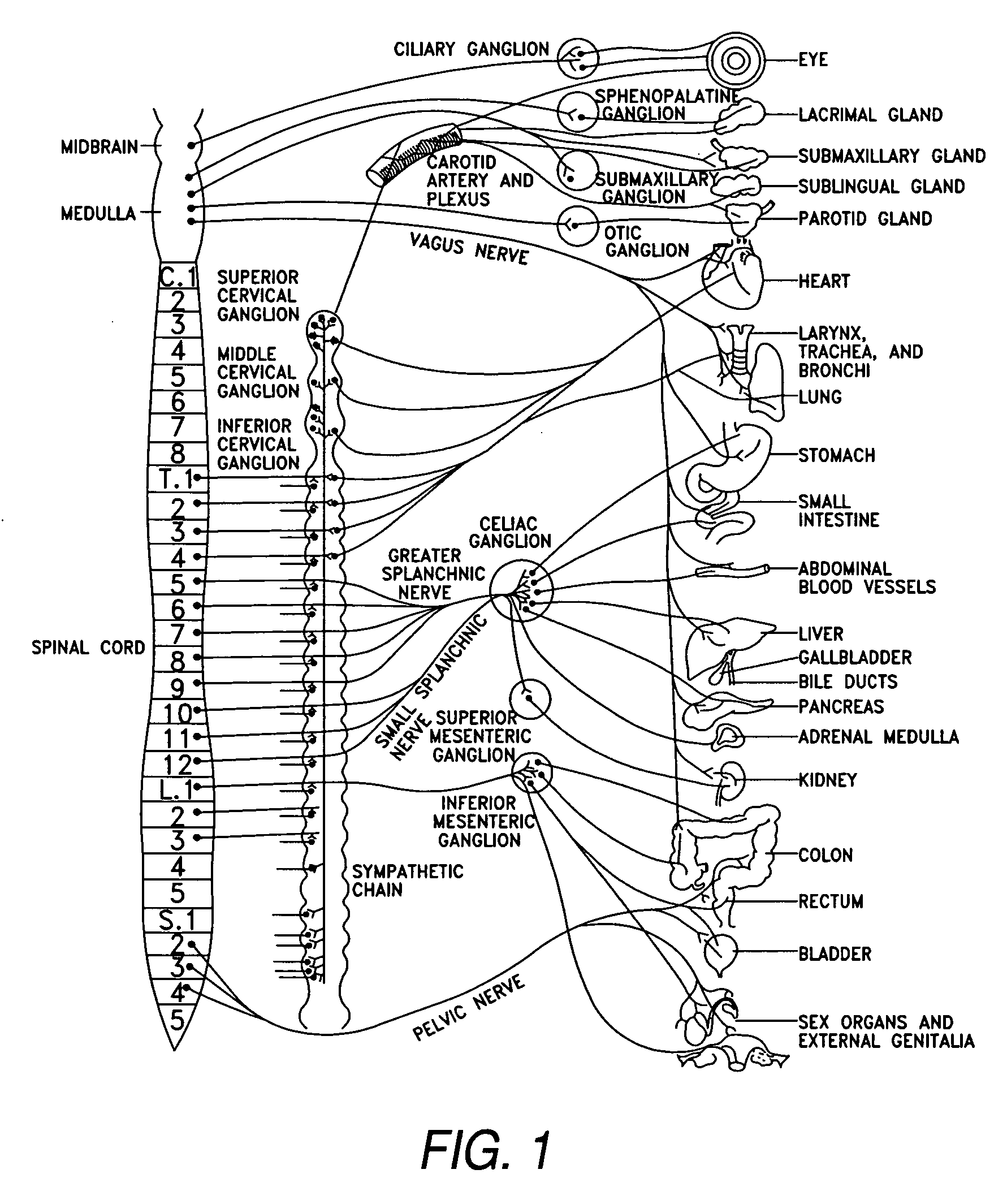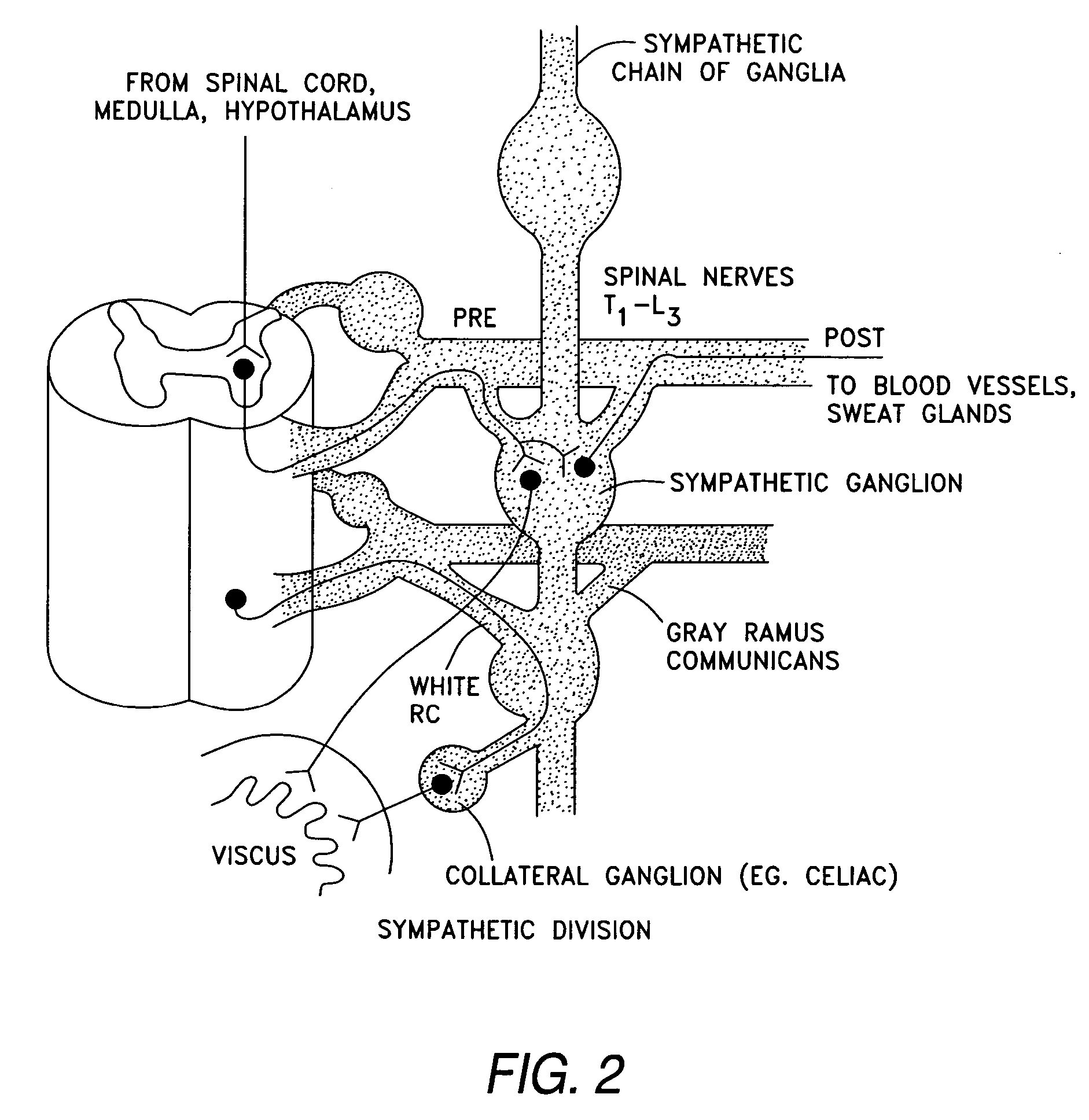Nerve stimulation for treatment of obesity, metabolic syndrome, and type 2 diabetes
a technology for metabolic syndrome and type 2 diabetes, applied in electrotherapy, therapy, etc., can solve the problems of increasing sympathetic activity, increasing fat reserves, reducing food intake, etc., and achieving the effect of reducing or eliminating an attendant condition
- Summary
- Abstract
- Description
- Claims
- Application Information
AI Technical Summary
Benefits of technology
Problems solved by technology
Method used
Image
Examples
Embodiment Construction
[0101] The invention includes a method for treating obesity, metabolic syndrome, Type 2 diabetes, or other disorders by electrically activating the sympathetic nervous system with an electrode on or near a nerve, or with a wireless electrode inductively coupled with a radiofrequency field. In some embodiments, obesity (or the other disorders mentioned above) can be treated by activating the efferent sympathetic nervous system, thereby increasing energy expenditure and reducing food intake. Stimulation can be accomplished using a radiofrequency pulse generator and electrodes implanted near, or attached to, various areas of the sympathetic nervous system, such as the sympathetic chain ganglia, the splanchnic nerves (greater, lesser, least), or the peripheral ganglia (e.g., celiac, mesenteric). In some embodiments, the obesity therapy will employ electrical activation of the sympathetic nervous system that innervates the digestive system, adrenals, and abdominal adipose tissue, such as...
PUM
 Login to View More
Login to View More Abstract
Description
Claims
Application Information
 Login to View More
Login to View More - R&D
- Intellectual Property
- Life Sciences
- Materials
- Tech Scout
- Unparalleled Data Quality
- Higher Quality Content
- 60% Fewer Hallucinations
Browse by: Latest US Patents, China's latest patents, Technical Efficacy Thesaurus, Application Domain, Technology Topic, Popular Technical Reports.
© 2025 PatSnap. All rights reserved.Legal|Privacy policy|Modern Slavery Act Transparency Statement|Sitemap|About US| Contact US: help@patsnap.com



